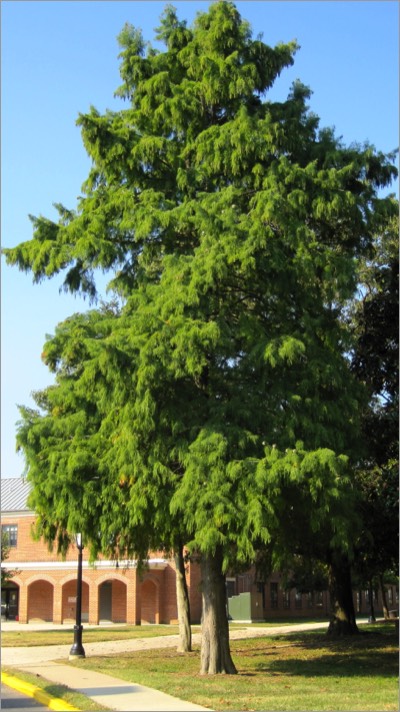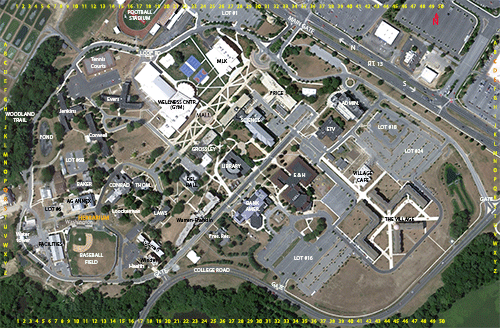Taxodium distichum


Taxodium distichum
BALD-CYPRESS
Taxodiaceae
E. North America
Locations: map coordinates G-28 (northwest side of old Science Center, north side of entrance), N 39°11'13'' W 75°32'29''; and
P-13 (near southeast corner of Baker Building), N 39°11'9'' W 75°32'43''
Planting history: probably planted by Dr. N. Dill, 1960’s-1970’s
Description:
Native species, State Rank S2 (very rare and of conservation concern; typically between 6 and 20 known populations) on coastal plain in Kent and Sussex Counties of Delaware
BALD-CYPRESS
Taxodiaceae
E. North America
Locations: map coordinates G-28 (northwest side of old Science Center, north side of entrance), N 39°11'13'' W 75°32'29''; and
P-13 (near southeast corner of Baker Building), N 39°11'9'' W 75°32'43''
Planting history: probably planted by Dr. N. Dill, 1960’s-1970’s
Description:
- large deciduous tree, conifer. (Sheds leaves in winter; most other conifer species are evergreen)
- etymology: Taxodium = yew-like, from Taxus (yew) and Greek eidos (resemblance); distichum = in two ranks (the leaves)
- common name “bald”, because leafless in winter (unlike most other conifers)
- needles short (1/4”-7/8” long) deciduous (leaves shed in winter)
- arrangement of needles and shoots is alternate
- cones round, 1” wide, shatter (fall apart) at maturity
- very long-lived trees
- wood decay-resistant; valuable for construction, posts, railroad ties etc.
- habitat: wet areas of coastal southeastern USA (e.g. “cypress swamps”), where woody root “knees” protrude above water (“knees” probably function in support, but formerly were thought to help provide oxygen to the roots)
- southern tree; northern limit of natural range is Delaware (e.g. Trap Pond, Trussum Pond)
- grown as ornamental; including in drier soils and north of its native range (up to southern Canada). Resembles the non-native dawn redwood, Metasequoia glyptostroboides (which differs in having opposite arrangement of leaves and shoots; and different cones)
Native species, State Rank S2 (very rare and of conservation concern; typically between 6 and 20 known populations) on coastal plain in Kent and Sussex Counties of Delaware


There are 2 labeled bald cypress trees.
HIT REFRESH TO START LOCATION GRAPHIC